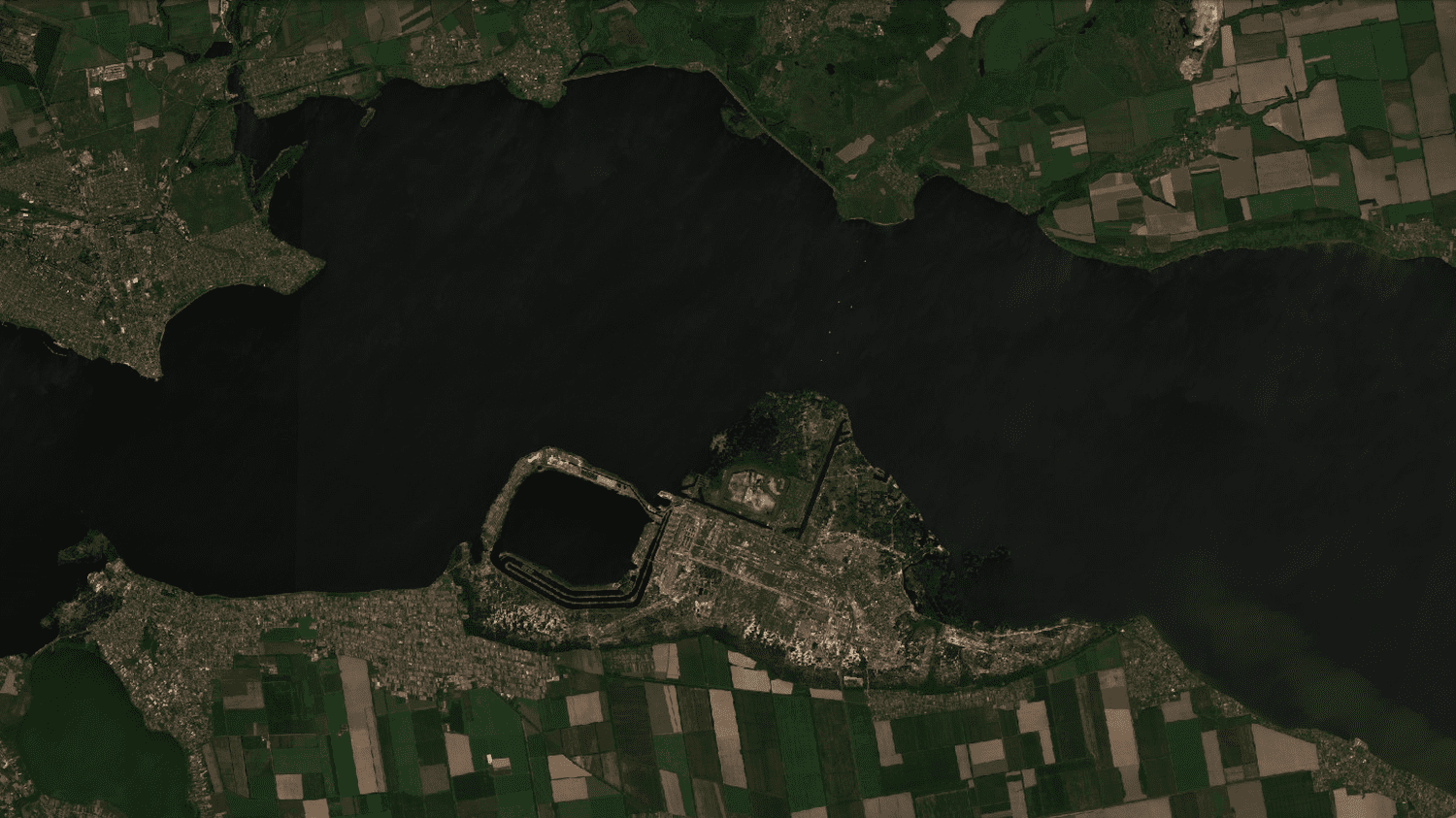Since the shutdown of its six reactors, the facility uses less water. Cooling is provided by fountain basins, and a retention basin also offers significant room for manoeuvre.
The Zaporijjia power station is once again making headlines after the destruction of the Kakhovka dam, located about 150 km away, in the Kherson region of Ukraine. The huge Kakhovka reservoir, which covers 1,850 km² on the course of the Dnipro river, loses between 4 and 7 cm every hour. The possible consequences on the cooling of the fuel are therefore closely studied by the International Atomic Energy Agency (IAEA), but without excessive concern. The immense ecological and human disaster, in fact, has no technical consequences on the industrial plant located on the banks of the Dnipro river.
>> Follow in our live the evolution of the situation on the front of the war in Ukraine
Normally, when the reactors are in operation, the water is first taken from the river (the Kakhovka reservoir) via pumping carried out at the thermal plant. This water feeds a vast retention basin, in which the water from the cooling circuit is extracted.
Fountain basins used for months
But this system has not been used for months, with the shutdown of the last of the six reactors last September. In this case, another system comes into play: cooling is provided by fountain basins, these small rectangles visible to the right of the line of reactors (see picture below) and similar to a dozen Olympic swimming pools. “This is a normal configuration, planned during the design of the plant”, explains to franceinfo Igor Le Bars, director of expertise at the Institute for Radiation Protection and Nuclear Safety (IRSN). In summary, the destruction of the dam did not change the operation of the Zaporijjia power plant, located in the occupied town of Enerhodar.

The water circulates between these fountain basins, equipped with sprinkler systems called “sprinklers”, and the various systems to be cooled. “It’s a closed circuit, a ’round-the-clock’continues the nuclear safety engineer. There is a loss of water over time, due to the evaporation of hot water, but this remains limited”, a few tens of cubic meters per day. These “small” basins are sufficient to cool the reactor fuel, because the needs are much lower than for reactors in operation – the order of magnitude is 1,000 times lower. In addition, fountain basins provide cooling for certain internal systems, such as circulation pumps.

Cooling has been provided by these fountain basins for months. Their autonomy is evaluated by Igor Le Bars at several weeks. After that ? First option: a restocking of water from the retention basin, much more extensive, which then prolongs the autonomy of several months. “This is why the operator is currently pumping water into the Dnipro, in order to raise the level of the basin and keep as much water as possible available”, explains the engineer. The discussions of the last few days have revolved a lot around this question.
A huge retention basin as reinforcement
The retention basin does not seem to suffer. Its level was 16.66 m, Friday morning, “which is quite sufficient to meet the needs of the station”comments the company Energoatom in a press release.
The Kakhovka reservoir loses several centimeters per hour. The IAEA had initially declared that it would be impossible to take water there if the level fell below 12.7 m. This limit was reached Thursday evening at 6 p.m., without however any consequences. By 8 a.m. Friday morning, the water level was down to just 11.74m in the reservoir, a total drop of five meters, but the pumping was still working. Finally, the “minimum threshold was revised yesterday to 11 m, which is not surprisingcomments Igor Le Bars, car there are always margins” in the security documents.

The retention basin is completely autonomous from the Kakhovka reservoir, from which it is separated by a dyke. “One of the questions, however, is whether this dyke will lose its watertightness, and therefore its autonomy, due to the drying up of the river and a lower pressure of water on one side”says Igor Le Bars. But it is also possible to compensate for evaporation from fountain basins, without even touching the retention basin. “The volumes of water in these fountain basins are compatible with a replenishment via additional means: piping or transport from the remaining water of the Dnipro”, specifies the IRSN expert.
The director of the IAEA will go there
The IAEA therefore considers that there is no immediate risk linked to the destruction of the dam. The agency’s managing director, Rafael Grossi, is still due to visit the site next week. He wants to check himself “the place where the water level of the reservoir is measured”specifies a press release, as well as “the condition of the systems that provide cooling water”.
The president of Energoatom, Petro Kotine, was also reassuring, in an interview granted to the Russian-language media Radio Svoboda. Pumping is able to supply the plant even at the lowest levels of the Kakhovka reservoir, the official said, referring to a “situation under control”. He adds that the plant has other options. “Mobile pumping units can be deployed if needed, and underground drinking water wells can be used as a last resort” to feed the retention basin. The only concern, according to him, is the presence of the Russian occupiers, who “may further aggravate the situation”.
The question that now arises is the integrity of the fountain basins and the retention basin in a high-intensity conflict zone, a fortiori during an announced Ukrainian counter-offensive. The Zaporizhia power plant, the largest in Europe, has been targeted several times by gunfire and has been cut off from the electricity grid seven times since its capture by the Russian army on March 4, 2022.
